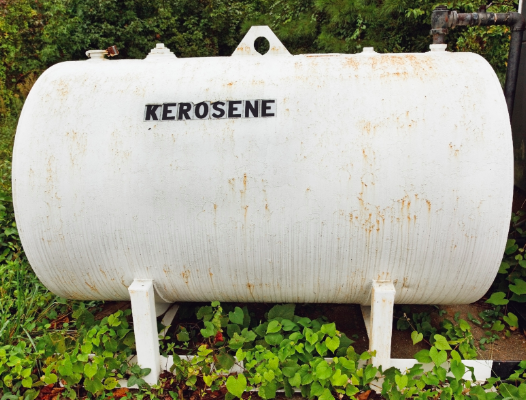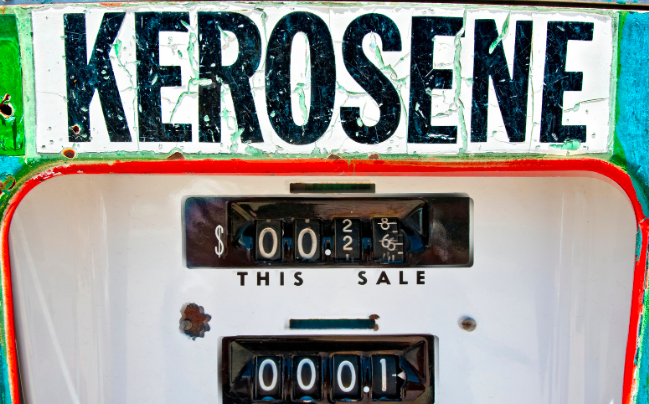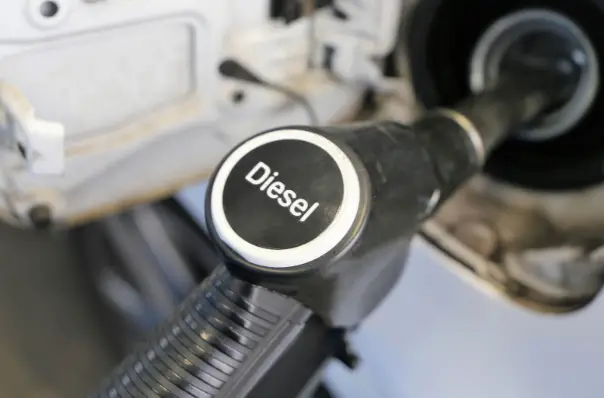Last Updated on November 25, 2022 by mdmtool
Kerosene and diesel are two types of petroleum-based fuels. They are both derived from crude oil, but there are some significant differences between them.
What Is Kerosene?

Kerosene is a light petroleum distillate used as a fuel or solvent. It is also known as Paraffin Oil.
What Is Diesel?

Diesel is a type of fuel used in engines. It is made from petroleum and is heavier and oilier than gasoline.
Difference Between Diesel And Kerosene

History: Kerosene was discovered in the 19th century, while Rudolf Diesel invented diesel fuel in the early 20th century. Diesel is named after its inventor, Rudolf Diesel.
Composition: Kerosene is composed of hydrocarbons with between 10 and 16 carbon atoms. Diesel is also composed of hydrocarbons but has a higher proportion of molecules with 18 or more carbon atoms.
Structure: The molecules in diesel are more significant than those in kerosene.
Extraction: Diesel is extracted from the fractional distillation of crude oil between 250°C to 350°C. Kerosene is extracted from the fractional distillation of crude oil between 150°C to 300°C.
Color: Diesel is dark in color, while kerosene is colorless or has a pale yellow color.
Volatile: Kerosene is more volatile than diesel and can be more challenging to handle.
Boiling Point: Kerosene has a boiling point of between 150 and 300 degrees Celsius, while diesel boiling point is between 250 and 350 degrees Celsius.
Flash Point: The flash point of diesel is higher than that of kerosene. The flash point of diesel is between 125°F to 180°F. On the other hand, the flash point of kerosene is between 100°F to 162°F.
Smoke Point: The smoke point of diesel is higher than that of kerosene. The smoke point of diesel is 400°F. On the other hand, the smoke point of kerosene is 200°F.
Auto-Ignition Temperature: The auto-ignition temperature of diesel is higher than the auto-ignition temperature of kerosene.
The auto-ignition temperature of diesel is 410°F. On the other hand, the auto-ignition temperature of kerosene is 428°F.
Toxicity: Diesel is less toxic than kerosene. Diesel fuel evaporates slowly, making it less likely to cause inhalation injuries.
Flammability: Diesel is more difficult to ignite than kerosene, but it burns more fiercely once ignited. Diesel also produces more carbon monoxide (CO) than kerosene.
Fuel Delivery: Diesel is delivered to the combustion chamber by a fuel injector. Kerosene is delivered to the combustion chamber by a carburetor.
Emissions: Diesel engines produce fewer emissions than kerosene engines.
Performance: Diesel engines perform better than kerosene engines and have higher compression ratios.
Cost: Diesel is more expensive than kerosene.
Applications: Diesel is used as a fuel for engines. It is also used in heating oil and as a fuel for generators, while kerosene is used as a fuel for lamps and lanterns, as a cleaning solvent, and as a degreaser.
Advantages & Disadvantages
Advantages Of Diesel
- Diesel contains more energy than an equivalent amount of gasoline.
- Diesel engines are more efficient than gasoline engines.
- Diesel fuel is less volatile than gasoline, making it safer to store and handle.
- Diesel engines have a longer lifespan than kerosene engines.
Advantages Of Kerosene
- Kerosene burns cleaner than diesel, resulting in less engine wear.
- Kerosene engines don’t require as much maintenance as diesel engines.
Disadvantages Of Diesel
- Diesel engine are more harmful to the environment than gasoline engine emissions.
- Diesel also contains sulfur, which can lead to acid rain.
- Diesel engines produce more noise than gasoline engines.

Disadvantages Of Kerosene
- Kerosene produces more soot than diesel, leading to clogged filters and reduced engine life.
- Kerosene is not as widely available as diesel.
Carbon Chains In Petroleum Products
Petroleum products are composed of hydrocarbons, molecules consisting of carbon and hydrogen atoms. The length of the carbon chain in a petroleum product determines its properties. Kerosene has shorter carbon chains than diesel.
Precautions
Both kerosene and diesel are combustible liquids and can be dangerous if not used properly.
- Always keep a fire extinguisher nearby when using either fuel.
- Never use kerosene or diesel near an open flame.
- Never smoke while handling either fuel.
- Be sure to ventilate the area when using either fuel.
- Never store kerosene or diesel near an open flame.
- Wash your hands after handling either fuel.
FAQs
What Is The Origin Of The Word “Kerosene”?
“kerosene” is derived from the Greek word “keros“, which means Wax. Initially, kerosene was used to make candles and lanterns.
Conclusion
Diesel and kerosene are both petroleum products that can be used as fuel for engines. Both diesel and kerosene have their unique benefits and drawbacks. Depending on your needs, one may be a better option for you than the other. Kerosene is the way to go if you’re looking for improved fuel economy. However, diesel is the better choice if you need a more powerful fuel that can handle heavy-duty applications. Ultimately, deciding which fuel to use is up to you and your specific needs.





